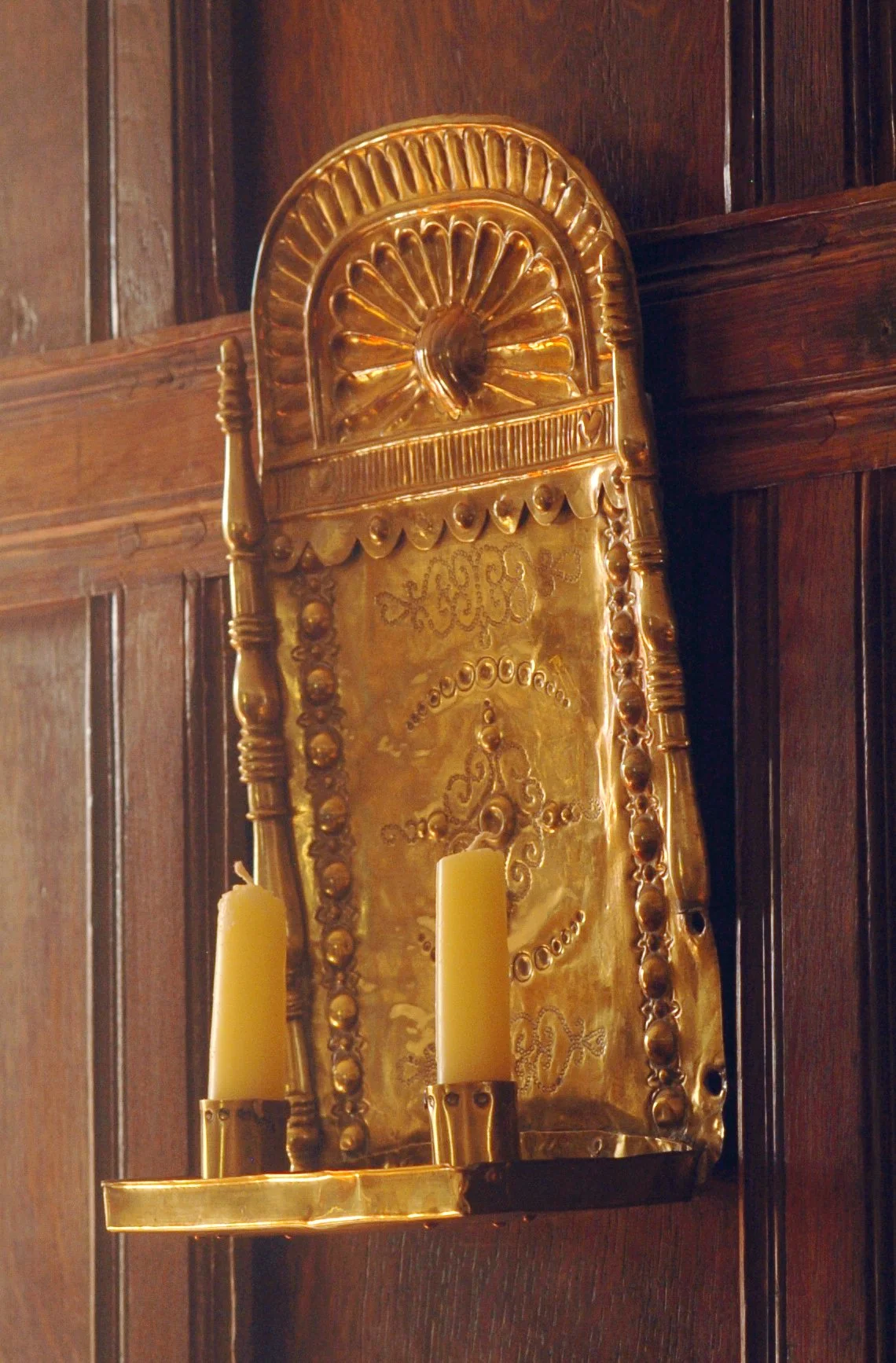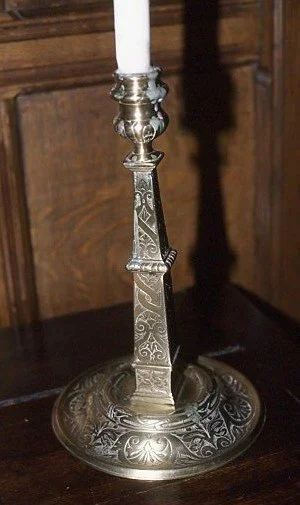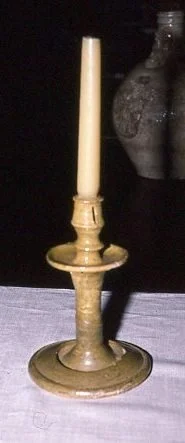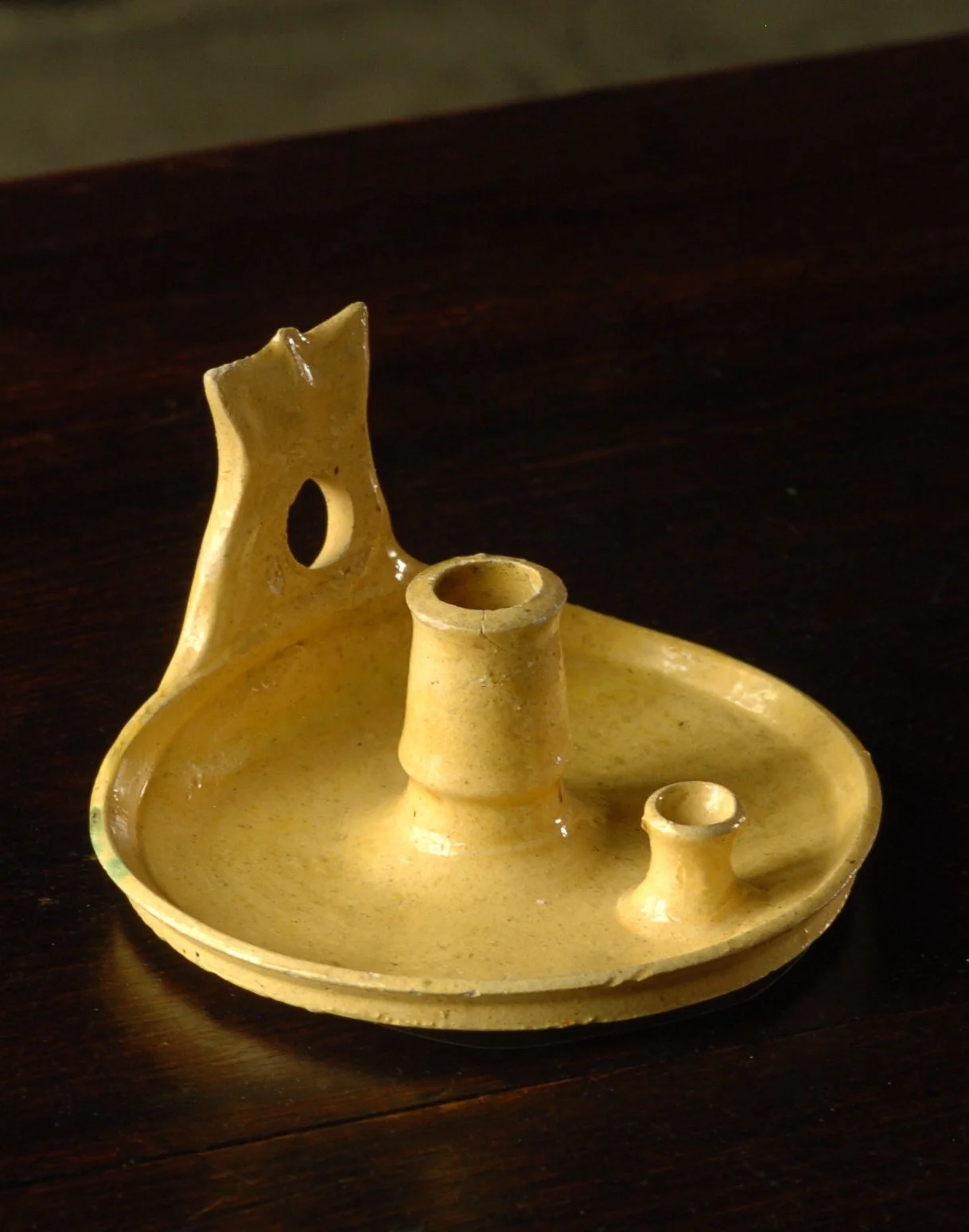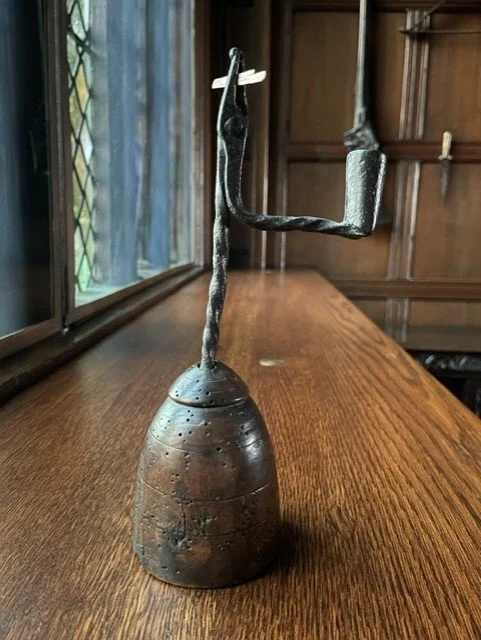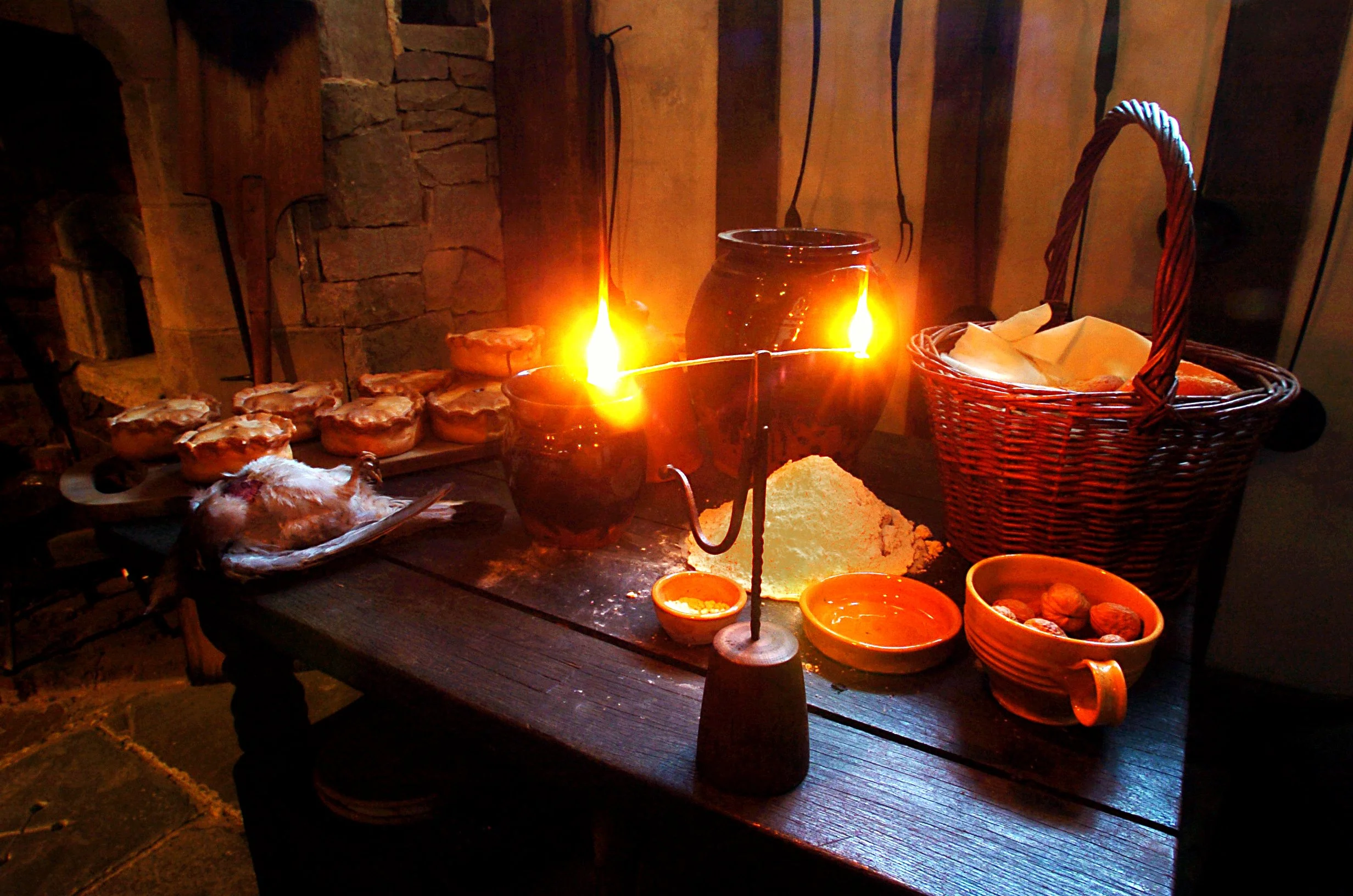Lighting the Night: Light Devices at Agecroft Hall
With the time change occurring in early November, it seems to get dark at 5m. Darkness is easy enough for modern people to combat thanks to a vast array of lighted technology. Today our rooms are illuminated not only with light fixtures, but also with light sources associated with TVs, computers, ovens and other appliances. But imagine being in Northwest England in the 17th century during the winter season—it would have been very dark! In fact, Agecroft’s original home has two hours less sunlight in winter than Richmond does. To fight the darkness in past centuries, people used a variety of candles, rush lights, sconces, chandeliers, and fires. There are examples of most of these objects in Agecroft Hall’s collection.
Candlesticks, rush lights, and sconces all held light and were used depending on a person’s status. Beeswax candles were expensive, but created less mess, less smoke, and less smell. These could be purchased or, if one owned a beehive, produced at home. Tallow candles, made of rendered animal fats, were much easier to make at home, with a cotton string or reed as the wick. Tallow is softer than beeswax, so it burns faster, and, if properly rendered, the fat would not be any smokier than a wax candle or smell any worse. The candles would be used in candlesticks and sconces, which helped to reflect light back into the room.
Another alternative were rush lights, devices that held a dried reed, or rush, dipped in animal fat, cured and then lit aflame. These were much cheaper to make, as reeds and animal fat were much easier to come by. The downside of a rush light is that they were smoky and stinky—as burning animal fat tends to be! Imagine trying to read, or embroider, or write a letter by candle light.
Chandeliers did exist in the 17th century, but based on Agecroft’s location, size and standing as a manor house, there probably would not have been one in the home. Chandeliers required many candles, and a servant to light all the candles and then monitor the candles throughout the evening. Because of this, chandeliers were usually reserved for the very wealthy or even royalty.
Finally, fires were essential to life and fireplaces were incredibly important in providing both that warmth and light. Imagine sitting in front of a warm, crackling fire on a cold winter’s night. The chimneys and fireplace surrounds were pieces that were specifically chosen by the architect to bring over to Richmond when Agecroft Hall was rebuilt here in the 1920s. If you come to Agecroft, sometimes you can smell traces of fireplace smoke in the Williams Library.
While it is still dark in Agecroft Hall in the late afternoon, it is nowhere near as dark as it would have been on a cold winter’s night in England. People did not choose to live sun up to sun down, but almost had to, because that was the best use of the light of the day. Winters are still cold, long and dark, but today, with the invention of affordable electric lights, we no longer have to worry about scheduling our winter activities around the available sunlight. This, along with central heating which was added to Agecroft when it was rebuilt in Virginia, are the two main reasons why winter evenings at Agecroft are much more comfortable today than they were centuries ago.

